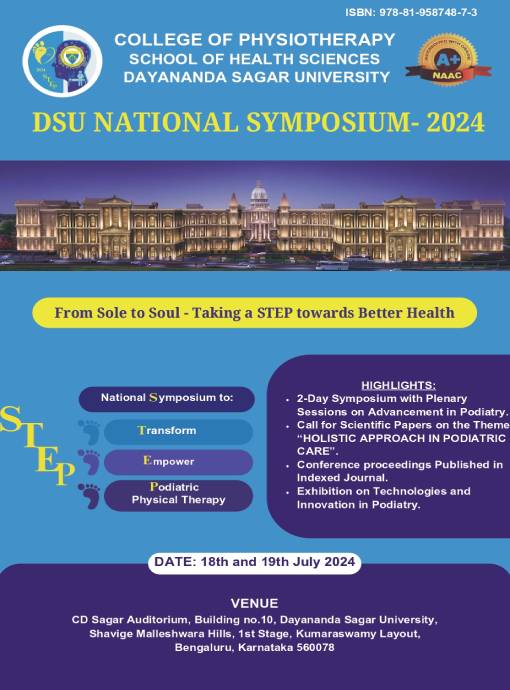A Study to Assess Upper Extremity and Neck Disability and its Relation with Hand Grip and Pinch Grip among the Carpenters in Selected Places of Bengaluru
DOI:
https://doi.org/10.18311/DSUPHY/9788195874873/2024/054Keywords:
Blackburn Exercises; Proprioceptive Neuromuscular Facilitation Techniques; Recreational Badminton Players; Scapular DyskinesiaAbstract
Background: Carpentry is a physically demanding occupation that requires significant use of the upper extremities and neck. Prolonged and repetitive activities can lead to musculoskeletal disorders, impairing hand grip and pinch grip strength. These impairments can affect carpenters’ functional capacity and overall quality of life. This study aimed to understand the prevalence of upper extremity and neck disability and its relationship with grip strength, which was essential for developing effective interventions to enhance carpenters’ occupational health and productivity. The primary objective of this study was to assess upper extremity and neck disability among carpenters in selected areas of Bengaluru and to examine its relationship with hand grip strength and pinch grip strength. Secondary objectives was to find relationship between hand grip strength and the duration of exposure to carpentry work, and also to analyze the relationship between two-point pinch, lateral pinch and three-point pinch strength with the duration of exposure to carpentry work.
Aim: To assess upper extremity and neck disability and its relationship with hand grip strength and pinch grip strength.
Methodology: In this study, 100 participants aged between 25 and 60 years were selected from diverse locations in Bengaluru. To evaluate upper extremity disability, participants completed the quick disabilities of the arm, shoulder, and hand questionnaire. Additionally, their neck disability was assessed using the Neck Disability Index questionnaire (NDI). Furthermore, hand grip strength and pinch grip strength were measured using a hand- held dynamometer and a pinch grip gauge, respectively. Statistical analysis was executed using spearman’s rank correlation coefficient to examine the relationships between these variables.
Results: The study showed a significant upper limb disability with mean and standard deviation of 45.78±9.19 and neck disability with a mean of 26.80±5.49 among carpenters. The study also showed a strong negative correlation between upper extremity disability and hand grip strength (r = -0.862), two-point pinch (r = -0.607), lateral pinch (r = -0.891) and three-point pinch (r = -0.882). Further, the study also demonstrated a strong negative correlation between neck disability and hand grip (r = -0.833), two-point pinch (r = -0.6), lateral pinch (r = -0.892) and three-point pinch (r = -0.883) indicating both upper limb disability and neck disability influenced hand grip and pinch Grip. The study also showed that there was negative moderate correlation between the duration of working exposure and hand grip and pinch grip.
Conclusion: The study concluded that there was a significant correlation between upper extremity and neck disability with hand grip strength, two-point pinch, lateral pinch and three-point pinch strength. There was also significant correlation between duration of exposure with hand grip strength, two-point pinch, lateral pinch and three-point pinch strength.
 Avadhut Sharad Naik
Avadhut Sharad Naik
